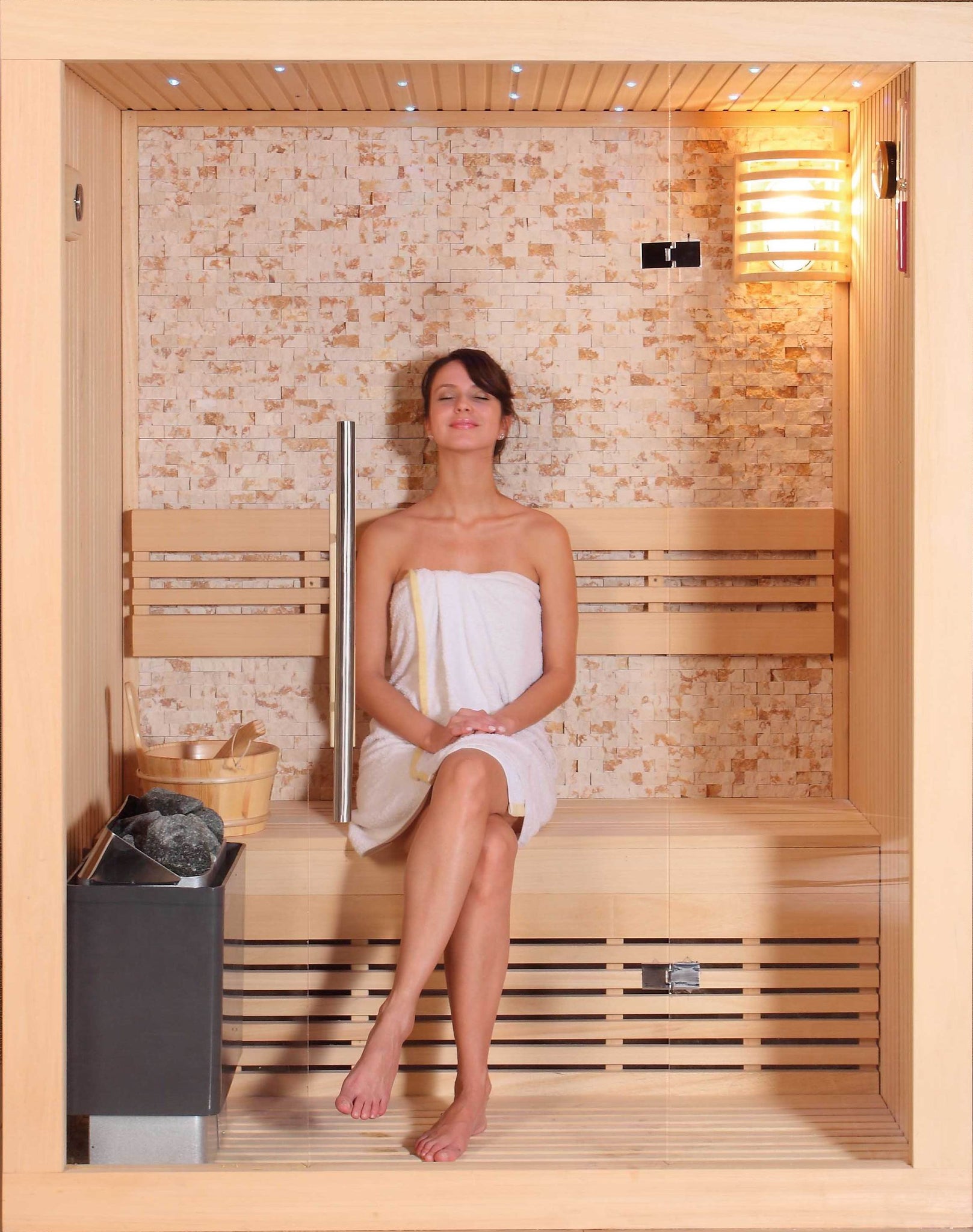7 Easy Facts About Traditional Sauna Explained
Wiki Article
Things about Traditional Sauna
Table of ContentsFascination About Traditional Sauna9 Simple Techniques For Traditional SaunaTraditional Sauna Things To Know Before You BuyThe 5-Minute Rule for Traditional SaunaTraditional Sauna Things To Know Before You Get This
A lot of the weight shed in a sauna is water loss and is re-gained upon rehydrating. Without an uncertainty sauna can be a vital part of a healthy weight loss program. To check out the differences in between traditional and IR saunas, I will certainly separate these right into proven, academic, and produced distinctions.Hence, the best factor in the saunawhich goes to the ceiling straight over the sauna heateris usually in between 185 and 190 F. Claims that a typical sauna exceeds 200 F is simply not true and not applicable for electrical saunas offered in the United States. The temperature level for a far-infrared sauna is usually established between 120 and 140 F; nevertheless, unlike the standard sauna, the objective in and IR room is not to accomplish a high temperature.

When a standard sauna has been appropriately heated up, the sauna walls are cozy, the air temperature has actually accomplished established temperature and the rocks are extremely heated. As an intriguing side note, the heated wall surfaces and the rocks are producing far-infrared warmth, incorporated with the warmed air, to create an "covering heat".
The Buzz on Traditional Sauna
When the heat is attained, the aspects cycle on and off to maintain the heat. Most standard sauna users appreciate pouring water over the rocks to produce vapor to raise sauna humidity degrees. The advantages of pouring water over the rocks include: making the room a lot more comfy, dampening the nasal flows, and allowing the usage of aromatherapy by mixing vital oils with the water.

When the power gets in the body, it causes the body temperature to enhance and eventually leads to perspiration. In an infrared sauna it's crucial for the emitters/heaters to stay on nearly regularly. Because there is no mass of rocks to maintain warm, the sauna will cool if the emitters closed off.
Traditional Sauna Can Be Fun For Everyone
As pointed out over, the sauna bather in an infrared room wishes to place himself in front of running emitters to obtain maximum advantage from the warmth. The home heating review time for the 2 rooms can be really different, depending on how the areas are utilized. For a traditional sauna, a bather must enable 30-40 mins for the space to attain a preferred temperature level and to appropriately pre-heat the rocks.
A well built sauna will typically attain a temperature of 150-160 F in regarding 30-40 mins. For hotter temperature levels, the room might require to heat for a longer period.
To some, 15 minutes was "thrown away" while the infrared power warmed the timber panels instead of heating up a body, while others find a pre-heated room to be much more comfortable and believe a raised beginning temperature level is necessary to begin perspiring. The size of suggested usage for every space is about the same (10-15 minutes per session); however, due to the reduced air temperature levels and the capability to really feel the results of infrared warm much faster than a traditional sauna, it is not uncommon for an individual to invest a total of 20-30 minutes in an infrared sauna.
The Best Guide To Traditional Sauna

The average expense per kWH of electricity in the U.S. is roughly $0.11, so a 4.5 kW heater will certainly cost around $.50 to run for one hour, if the heating unit runs continually for one hour. Commonly a sauna heater will certainly compete 75% of the first hour and 50% of succeeding hours on given that the elements cycle once the established temperature level is attained.
A 2 individual far-infrared area is typically physically smaller than a standard sauna, often about 4' x 4' or smaller. The IR heater is generally 1.5-1.7 kW utilizing a 120 volt 15 amp plug-in solution. Since the room can be utilized quicker than a sauna area, we will certainly think the space is made use of for to of an hour consisting hop over to here of warm have a peek here up time.
Finally, there is a hardly ever discussed difference in the social experience between both spaces. While our society has actually shed several of the social advantage of the standard sauna experience, it can be really socially fulfilling (Traditional Sauna). From family members time in the sauna, to heart-felt discussions with better halves, to sauna partiesthe standard sauna experience can bring about intimate mingling
The Ultimate Guide To Traditional Sauna
A lot of greater end infrared spaces consist of colored light treatment, sound systems and full-glass fronts.Report this wiki page